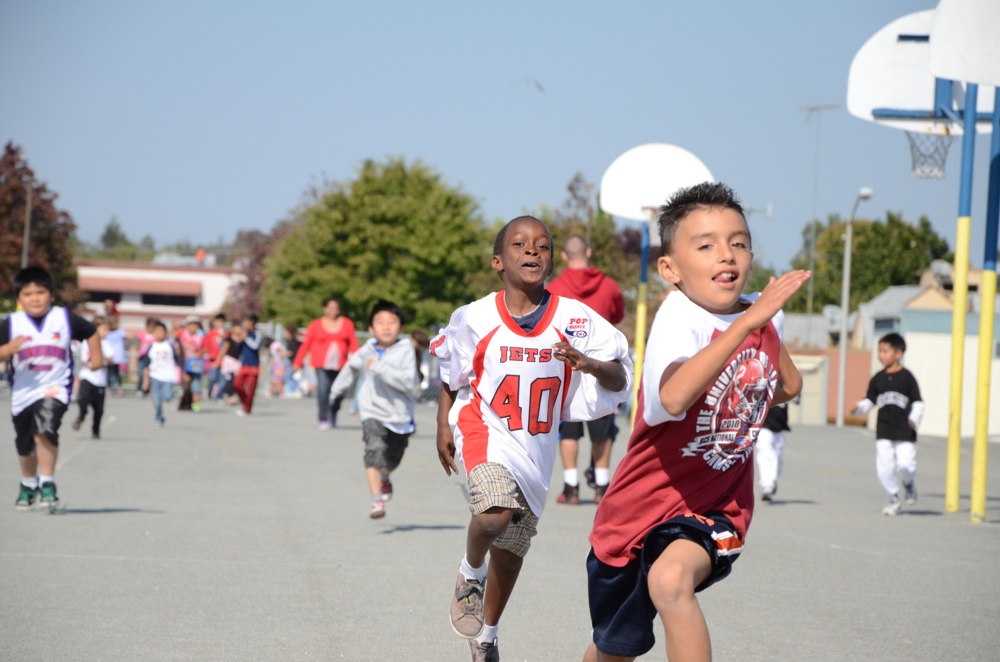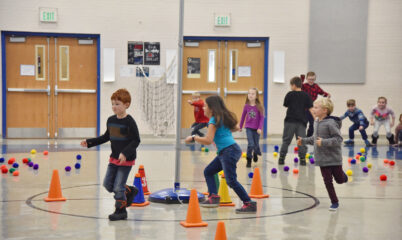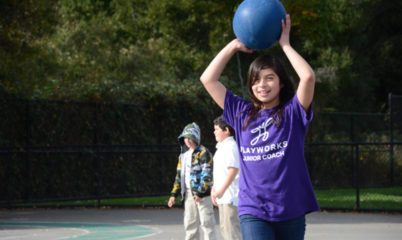A school district has instituted a No Running Policy during school recess, according to a mother on the Free-Range Kids website. We can only assume this policy was created with the children’s safety in mind. Trouble is… if kids are not allowed to run, they don’t get necessary physical activity to maintain healthy bodies AND are missing out the daily opportunity to learn HOW to use their bodies in safe manners.
Kids need recess to test their bodies, their limits and discover how to play in safe ways. And adults and older youth can guide kids through this process. Let’s not ban play, but teach safe play that allows for more running and tagging. If you are having issues with bans at your school, try going to your school principal in a calm manner. Tell them why you know play is necessary for kids bodies and minds. Then bring the principal these five tips to create a safe place for all kids to play:
- Map the playground. Creating a map of where games can be played will help children play safely. Work with school staff and student leaders to answer these questions: What games are the kids playing? What parts of the playground are they using? How do students make the transitions to playground and back inside? Where do kids who aren’t participating stand? Are there game in which balls go flying? Once you have a sense of what’s going on, imagine what you all would like to see. Take a piece of paper and draw a rough sketch of the playground divided into areas for different games. Then share it with everyone – teachers, parents, recess monitors and kids. Think about using cones to designate areas where kids play basketball and soccer. You can start with cones and sidewalk chalk, but once kids start to adopt the patterns of play, talk with your principal or facilities staff about painting lines for games. The ultimate idea is to give kids ownership of the area and their activity. Once kids feel that sense of ownership, they tend to take better care of playing the games in a safe manner.
- Teach body/spatial awareness. One reason injuries occur during play is because young children run into each other. Awareness of our own bodies and surrounding bodies is a learn skill. We can help children develop spatial awareness by encouraging them to be aware of others and practice this awareness in the play of games. Try simple games such as Hungry Fox, Shape Shifter, Colors, Ants on a Log and other games to help children develop spatial awareness.
- Teach and continuously encourage safe tagging. Tag sometimes gets bans at recess because children are being pushed over. Children don’t do this intentionally. They want the game to keep going. Many kids just aren’t aware of their own power while running and tagging. When we teach children to touch softly (like a butterfly’s wings on the shoulders arms or upper back), we empower them to play tag safely and have more fun. At Playworks, we like to call it butterfly tags. You could also call them shimmy tags, piano fingers, or whatever you fancy. You may be able to get the students’ classroom teachers or Physical Education teacher to teach these in class. Just remember kids need constant reminders. Teach them once. Teach them again on the playground. And remind them again everyday.
- Play yourself. Volunteer on the playground and get in a game yourself. Encourage others to do the same. Children behave better and feel safer when there are grown-ups playing with them. We know it’s obvious, but when you’re playing with kids you should model playing safely and good sporting behavior. Play hard, have fun, be supportive, and win or lose graciously.
- Put the kids in charge. Encourage the school to give students leaders the opportunity to distribute and collect equipment, turn ropes for jumping rope, encourage high 5’s, resolve conflicts, and help split kids into teams. Older children love to help their peers and younger students and can play a big role in keeping students safe. Your school could give these responsibilities to existing student leadership groups – conflict managers or student government groups if they exist – or start a new student leadership program.



